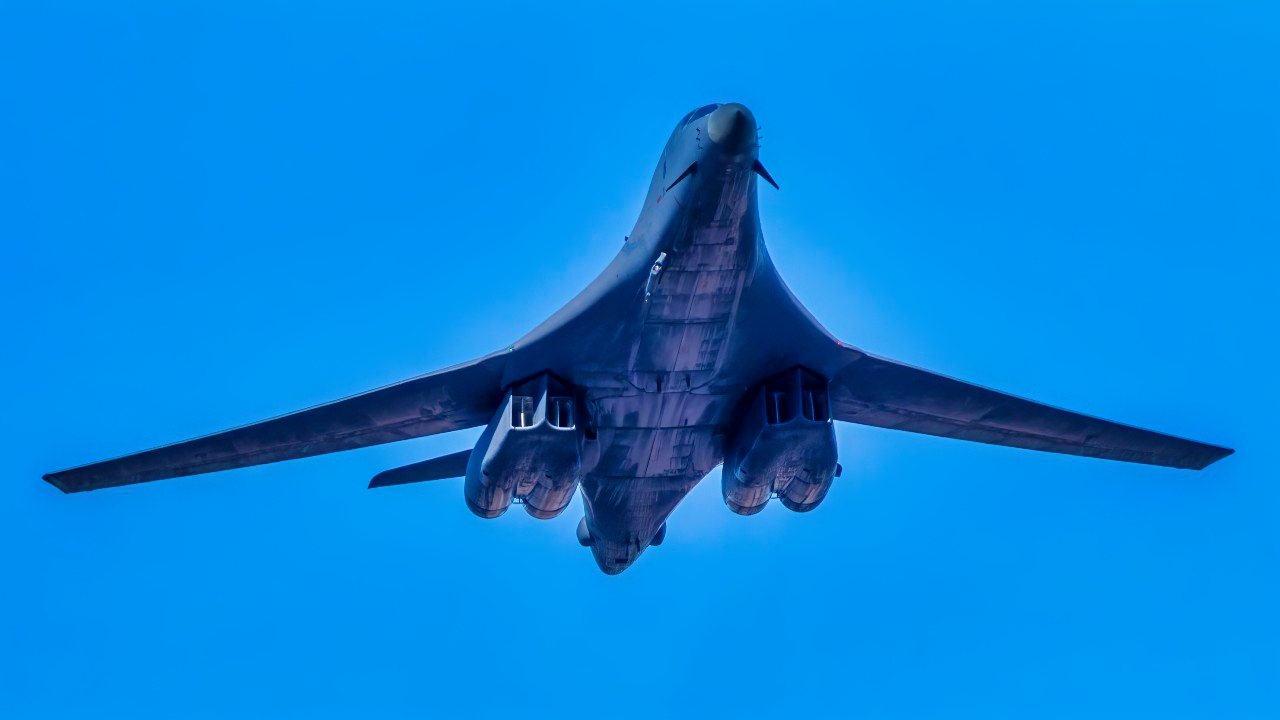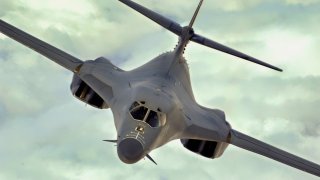A Pair of B-1B Lancer Bombers Just Landed on Russia's Doorstep
The B-1B Lancer, a key asset in the U.S. Air Force's strategic bomber fleet, continues to demonstrate its operational versatility and endurance.
Summary: The B-1B Lancer, a key asset in the U.S. Air Force's strategic bomber fleet, continues to demonstrate its operational versatility and endurance. Recently, as part of Bomber Task Force 24-2, two B-1Bs flew from Morón Air Base, Spain, to Incirlik Air Base, Turkey, participating in the Large Scale Global Exercise 2024. This deployment, which is part of ongoing efforts to train with allies and enhance interoperability, involved coordinated training missions with Turkish fighter aircraft.
B-1B Lancer Bomber Conducts Training Flights from Spain to Turkey, Bolstering NATO Interoperability
The United States Air Force's Rockwell B-1B Lancer has been in service for more than four decades, and it continues to log the miles as part of Bomber Task Force missions around the globe. This week, a pair of B-1B Lancers took part in Bomber Task Force 24-2, flying from Morón Air Base, Spain, to Incirlik Air Base, Turkey (Türkiye).
BTF 24-2 is a part of Large Scale Global Exercise 2024, an umbrella term that incorporates dozens of separate exercises and military activities under multiple combatant commands, which enables U.S. forces to train with Allies and partners to improve shared understanding, trust, and interoperability on security challenges. However, the deployment from Spain to Turkey – both NATO members – was not in response to last weekend's drone and missile strikes fired by Iran at Israel.
"Two U.S. Air Force B-1B Lancers flew from their deployed location at Morón Air Base, Spain, to Incirlik Air Base, Türkiye, April 15, 2024 as part of a long-planned, routine training mission conducted under Bomber Task Force 24-2," the 39th Air Base Wing announced via X, the social media platform formerly known as Twitter.
As part of the recent mission, the B-1B Lancers integrated with and trained alongside Turkish fighter aircraft before landing at Incirlik, where the U.S. aircraft are projected to conduct additional training events in coordination with Turkish forces, United States European Command announced.
"We would like to thank our Turkish hosts for their role in this vital training opportunity and for their on-going support to our team living and working as part of the Incirlik community," said Col. Kevin Lord, the 39th Air Base Wing Commander. "Bilateral operations and routine engagement between U.S. and Turkish forces, including these recent bomber task force missions, strengthen our shared commitment to regional security and stability."
The bombers and supporting personnel have been conducting a series of missions throughout the BTF 24-2 deployment to train alongside Allies and partners.
The Old B-1B Lancer Bomber Keeps Flying
The swing-wing bomber was developed to conduct high-speed, low-altitude penetration missions back when the Boeing B-52 Stratofortress was the king of the skies and conducted combat operations over the jungles of Vietnam. The Lancer – known as the "Bone" as its designation was "B-One" – took its first flight in December 1974.
At the time, it was a major leap forward in aviation design, and while smaller than the Stratofortress, its advanced engines and high-lift, variable-sweep wing allowed it to carry twice the weapon load at a much greater distance and higher speed.
While the B-1 was originally designed for nuclear capabilities, the aircraft were switched exclusively to a conventional combat role in the mid-1990s under the Conventional Mission Upgrade Program (CMUP). This was brought on by the collapse of the Soviet Union and the end of the Cold War – and President George H.W. Bush ordered the $3 billion refit, which included the removal of nuclear arming and fusing hardware – while provision under the New START treaty additional modifications were further made to prevent nuclear weapon pylons from being attached to the aircraft. The conversion process was completed by 2011, and Russian officials were even allowed to inspect the aircraft yearly to verify compliance.
The conventional upgrade program included a series of upgrades: the Block C, which was completed in 1997, gave the aircraft the capability to drop cluster bombs; the Block D, completed in June 2001, included the deployment of the JDAM defensive system, new navigation and communications systems; while the Block E, which was completed in September 2006, added capability to deploy joint stand-off weapons (JSOW) and joint air-to-surface stand-off missiles (JASSM). An additional Block F, which included the defensive system upgrade program (DSUP), was terminated.

Interestingly, while the B-1 was originally designed to strike cities deep in the Soviet Union, the aircraft only saw its first combat deployment in December 1998 during Operation Desert Fox, where the Lancer successfully penetrated Iraqi air defenses to destroy Republican Guard barracks. That debut mission served to validate the B-1B's conventional role and its ability to operate in a force package.
Today the B-1B continues to serve as a deterrent in BTF deployments around the world.
Author Experience and Expertise: Peter Suciu
Peter Suciu is a Michigan-based writer. He has contributed to more than four dozen magazines, newspapers, and websites with over 3,200 published pieces over a twenty-year career in journalism. He regularly writes about military hardware, firearms history, cybersecurity, politics, and international affairs. Peter is also a Contributing Writer for Forbes and Clearance Jobs. You can follow him on Twitter: @PeterSuciu.
You can email the author: [email protected].


